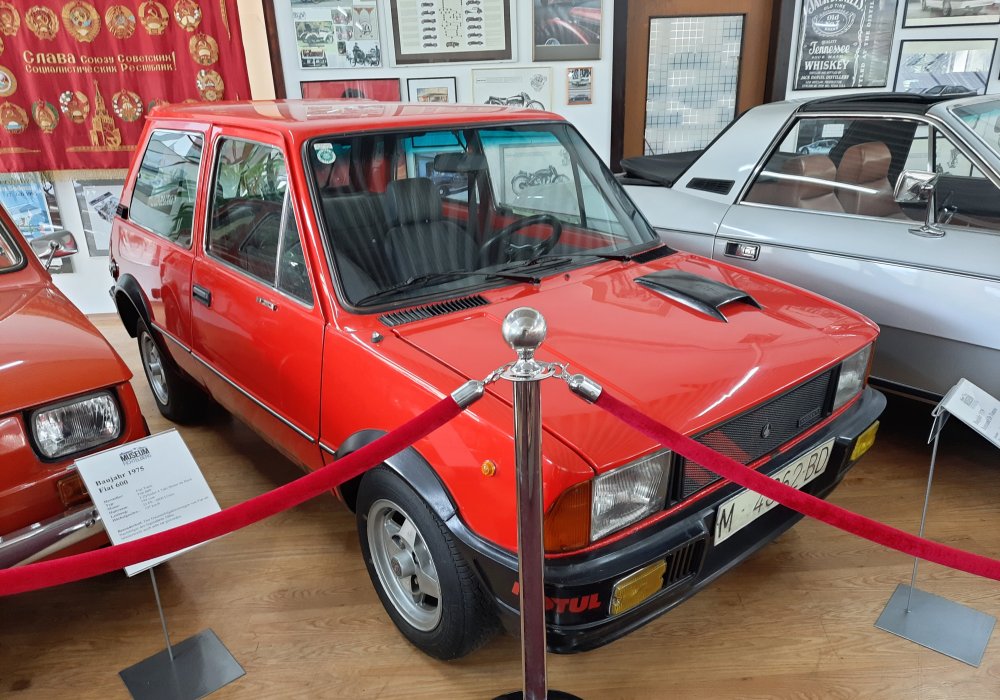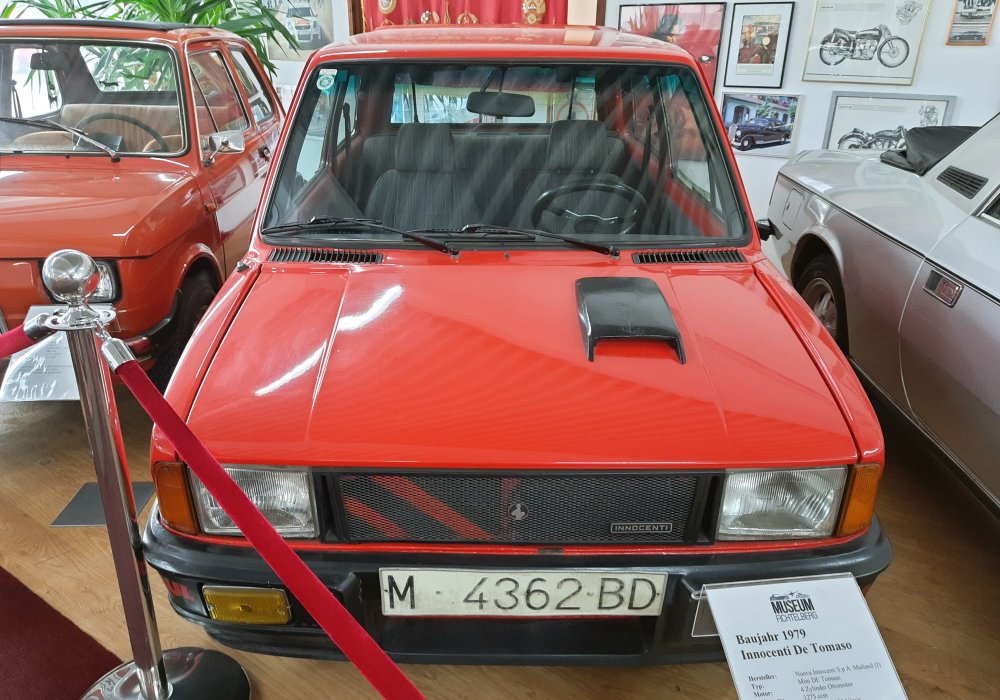Description
The Innocenti 120 L was the more powerful and luxurious sibling of the Innocenti Mini 90—a car that took the legendary British Mini’s engineering and transformed it into a distinctly Italian expression of refinement and style. Introduced in 1974, the 120 L represented the pinnacle of Innocenti’s reinterpretation of the Mini concept, combining the dynamic brilliance of Alec Issigonis’s front-wheel-drive layout with the clean, modern design of Marcello Gandini at Bertone. It was elegant yet compact, refined yet playful—a car that perfectly captured the spirit of 1970s Milanese motoring.
When Innocenti launched the Mini 90 and 120, it was no longer content to simply build licensed versions of the original British Mini. Under the ownership of British Leyland, the Italian firm decided to create a car that was unmistakably its own—keeping the mechanical heart of the Mini while giving it a completely new, sophisticated identity. The result was one of the most beautiful small cars of its time. The “120” designation referred to the larger, 1,275 cc engine under the bonnet, while the “L” denoted Lusso—the luxury trim level, emphasizing comfort, quality, and a touch of continental elegance.
Mechanically, the Innocenti 120 L was based on the proven Mini platform, with its transversely mounted four-cylinder A-Series engine and front-wheel-drive layout. The 1,275 cc engine, shared with the Mini Cooper S and Austin 1300 GT, produced around 65 horsepower, giving the car lively and engaging performance. With a curb weight just over 700 kilograms, the 120 L could reach 100 km/h (62 mph) in under 12 seconds and cruise comfortably at over 150 km/h (93 mph). Power was delivered through a precise four-speed manual gearbox, famous for its short throws and mechanical feel. The combination of compact size, eager performance, and finely tuned suspension made the 120 L one of the most entertaining small cars of its era.
The suspension layout remained pure Mini: independent at all four corners, using rubber cone springs and compact subframes. This setup gave the car exceptional agility, allowing it to hug corners with remarkable grip and minimal body roll. Steering was light, direct, and full of feedback, while the wide stance and short wheelbase made it exceptionally maneuverable in tight city streets. Braking was handled by front discs and rear drums, offering strong, progressive stopping power. The 120 L’s road manners impressed reviewers across Europe—it possessed the same sharpness and balance that had made the Mini a motorsport icon but wrapped in a body that looked more sophisticated and felt more refined.
That body was the work of Marcello Gandini at Bertone, and it represented a complete reinvention of the Mini’s aesthetic. Gone were the rounded, cheerful lines of the original; in their place came crisp geometry, taut surfaces, and an elegant, modern silhouette. The Innocenti 120 L’s shape was angular but beautifully proportioned, with a confident stance that made it look larger than it was. The front featured a wide horizontal grille, rectangular headlamps, and a slim bumper integrated neatly into the bodywork. The profile was smooth and uncluttered, with large windows, minimal overhangs, and slightly flared wheel arches giving it a purposeful appearance. At the rear, clean lines and rectangular taillamps completed the design, reflecting Gandini’s ability to make simplicity look dynamic. It was unmistakably Italian—sharp, elegant, and timeless.
Inside, the 120 L lived up to its Lusso name. The cabin was designed not as a basic city car but as a compact grand tourer. The seats were larger and more supportive than those in the British Mini, upholstered in high-quality cloth or optional leatherette with contrasting stitching. The dashboard was completely redesigned, with a full-width panel that housed clear rectangular instruments and neatly arranged controls. Depending on the model year, some versions featured wood veneer or brushed metal finishes, lending a touch of luxury. The steering wheel was stylishly simple, and the gear lever was short and precise. Sound insulation was greatly improved over the British versions, giving the car a sense of calm and refinement at speed. Practical touches—such as a proper glovebox, door pockets, and improved ventilation—made it a genuinely usable everyday car.
Driving the Innocenti 120 L was an experience that combined precision and civility. The larger 1.3-litre engine gave it a satisfying surge of power, particularly in the mid-range, while the compact chassis made it feel agile and responsive. It was a car that seemed to shrink around the driver, encouraging spirited driving even at modest speeds. The exhaust note had a subtle rasp, the gearbox clicked through its ratios with delightful precision, and the steering delivered perfect feedback through every curve. On the autostrada, it cruised comfortably and quietly, while in the city it darted through traffic with effortless agility. It was everything that made the Mini brilliant—refined, modernized, and given a distinctly Italian soul.
The Innocenti 120 L occupied an important niche in 1970s Europe. It offered the practicality and mechanical reliability of a small car, but with a level of finish and sophistication usually reserved for larger, more expensive models. Competing against cars like the Fiat 127, Autobianchi A112, and Renault 5, it stood out for its design integrity and handling finesse. Italian buyers appreciated its craftsmanship and exclusivity, while export markets admired it as a stylish alternative to the increasingly ubiquitous small hatchbacks of the era.
Production continued into the late 1970s, with variations such as the 120 De Tomaso—a sportier evolution tuned for higher performance. But the 120 L remains the most balanced expression of the Innocenti Mini ideal: powerful enough to be engaging, luxurious enough to be refined, and compact enough to remain true to the Mini’s ingenious origins.
Today, the Innocenti 120 L is cherished among collectors as one of the finest examples of cross-cultural automotive design. Its combination of British engineering, Italian craftsmanship, and Bertone styling makes it both technically fascinating and aesthetically timeless. Restored examples reveal a level of precision in construction and finish that still impresses decades later.
To drive an Innocenti 120 L today is to experience the best of both worlds—the immediacy and joy of the original Mini, enhanced by Italian sophistication and elegance. It remains one of the most compelling small cars of the 1970s, a miniature masterpiece that perfectly captured the optimism and creativity of its era: agile, stylish, and utterly distinctive.


